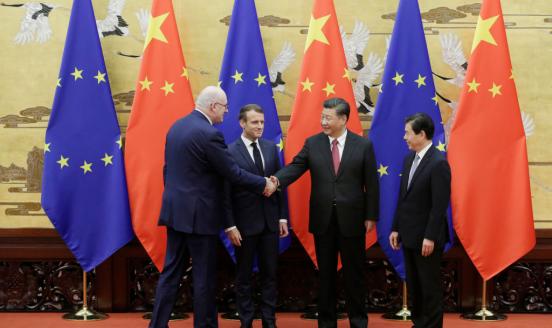Will China's quest for innovation help mitigate structural deceleration?


Policymakers in China are stepping up innovation efforts to combat the country’s decelerating economy, which is expected to help China foster growth and mitigate the fallout that China must deal with. The reasons behind such structural deceleration are well known and have been analysed in a past Bruegel paper. But how much can innovation help mitigate such trends?
The vision of the central government was best summarised in an article by Chen Jin et al (2018) from Tsinghua University, in which the authors proposed a new innovation paradigm for China, dubbed as “holistic innovation”. Holistic innovation combines previous approaches to innovation, often embedded in a specific cultural context and implemented by isolated actors within the entirety of the ecosystem. In this new paradigm, under the umbrella of a strategic vision set out by the Chinese state, actors engaging in innovation (research institutions, firms, government agencies) should seek synergies between internal and external resources for innovation, align every department of their organisation with the overall strategic goal of innovation and collaborate with all relevant institutions in the ecosystem. In other words, the central state aims to rally the entire country behind the goal of reaching the technology frontier, particularly for strategically important sectors.
The question is whether this holistic approach to innovation is working, at least as far as tackling the Chinese economy’s structural deceleration is concerned.
We should first focus on the inputs to innovation, namely how much a country spends on research and development (R&D) and human capital. China has clearly invested in its R&D expenditure, as a percentage of GDP. They have now reached the levels of the EU expenditure on R&D although they are still very far from US levels. The same is true with respect to the quantity and quality of both scientific publications and patent grants. However, this huge innovation effort has not fully translated into economic gains. While the value added of Chinese exports has clearly increased, China’s total factor productivity (TFP) has decelerated faster than was the case for economies in similar circumstances as those of China.
Beyond potential error measurement of TFP we identify three potential bottlenecks constraining the translation of innovation into improved TFP. First, China’s reform process has waned during the last ten years when compared to the decades right before and after entry into the World Trade Organization (WTO). Besides the stalling of the reform process, the institutional framework has become more complex with several new regulatory bodies with sweeping powers on businesses and a web of new laws to enhance national security. At the local level, the reliance of firms on connections to the government renders it difficult for China’s ‘mass of entrepreneurs’ to enter a level-playing field with incumbent enterprises.
A second bottleneck comes from China’s changing society, which for a long period has been very supportive of innovation and very positive about the country’s economic future. At this juncture, youth unemployment stands at a record high 20.8%, even after the full reopening of the economy. The high unemployment and the increasing uncertainty about the economic outlook, China’s youth have changed their career preferences towards civil servant jobs instead of entrepreneurship and private sector careers. This runs counter to the central government’s official aims of keeping China’s economic dynamism.
A third potential bottleneck comes from the US’ push to contain China technologically, which could have a negative bearing on China’s ability to get ahead in certain key sectors, most notably in the semiconductor industry. China’s drive to spend a huge amount of funds to reduce the gap with the US and advanced economies, formalised by initiatives such as ‘Made in China 2025’, has had mixed outcomes. On the one hand, China’s manufacturing has clearly progressed but the key bottlenecks, especially in the semiconductor sector continue to exist, despite China’s splash of funds to advance semiconductor design and fabs.
Despite this increased spending, China’s continuous dependence on foreign technology, coupled with a heavy US containment policy, may hamper the ability for China to improve growth opportunities and to mitigate structural deceleration through innovation.
China’s quest for innovation is clearly strong both in terms of the means put to work for this objective and the intermediate outcomes (from scientific publications to patents). However, China has not yet managed to smooth out the strong deceleration of the economy because of institutional and societal reasons and more recently, because of the US’ technological containment policies. Whether this will be the case in the future is too early to tell.
ZhōngHuá Mundus is a newsletter by Bruegel, bringing you monthly analysis of China in the world, as seen from Europe.
This is an output of China Horizons, Bruegel's contribution in the project Dealing with a resurgent China (DWARC). This project has received funding from the European Union’s HORIZON Research and Innovation Actions under grant agreement No. 101061700.




